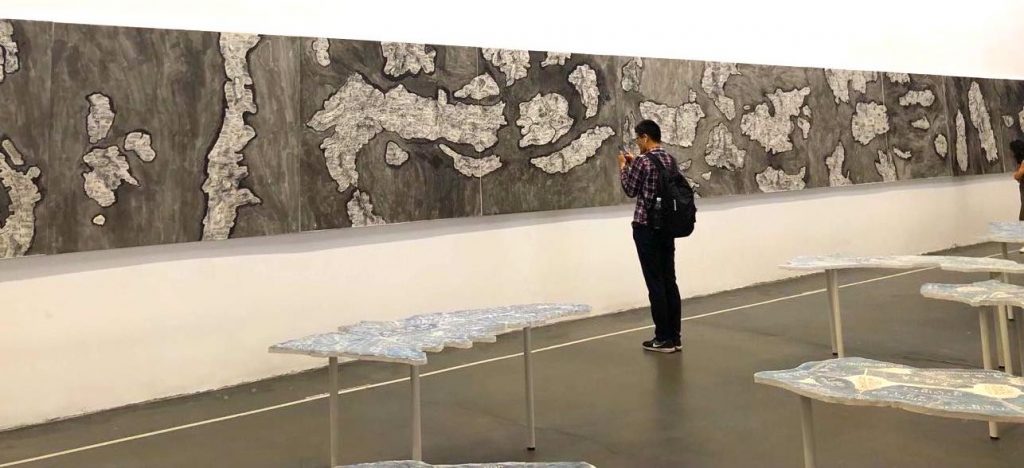
A few months ago I was asked to arrange a walking tour of 798 by the RAS -Beijing (Royal Asiatic Society ) . I knew that Mappa Mundi by polymath Qiu Zhijie would be a high priority for this visit. Prof Qiu is a writer, educator and curator believes that map making produces ‘awareness’ rather than understanding. Navigating links and building connections as we develop our own perceptions may well be one of those special things that shows us what it is to be human. These particular maps explore lost meanings and hidden connections that lie outside of history and common knowledge. On Saturday morning 4th (this was the last weekend the exhibition was running) we began our voyage of discovery at the UCCA.
The front exhibition hall had 28 free standing islands of cerebration, each a different ‘isim’.
Qiu Zhijie states that almost any word can become an ‘isim’ except for an …. – ism itself and so these installations are titled Isims at the End of the World.
On the wall behind the Isims is The Hong Kong Map of Culture with its islands along with a few extra thrown in for good measure. They span across HK newspaper media, comics, pop music, tv drama, films, cuisine , theatre , architecture athletics ect
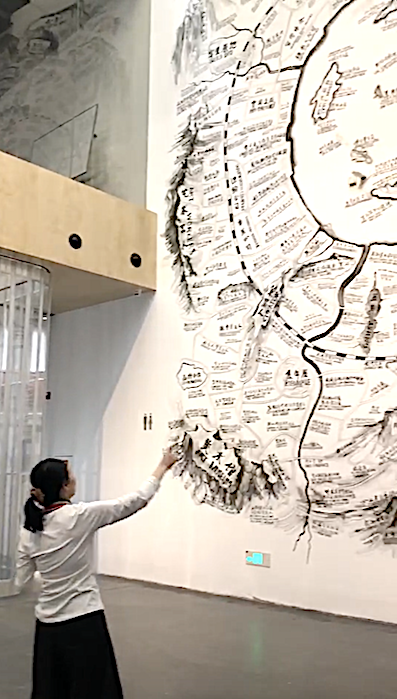
We then met a well known docent at UCCA, the energetic septuagenarian Chen Shao Qin. I have met Chen over recent years visiting UCCA. She told us a little about herself, her formal education came to a halt at primary school but she acquired her English from listening to the radio. Gracefully volunteering her indepth knowledge and gusto, she helped navigate us through the unexpected terrains ahead.
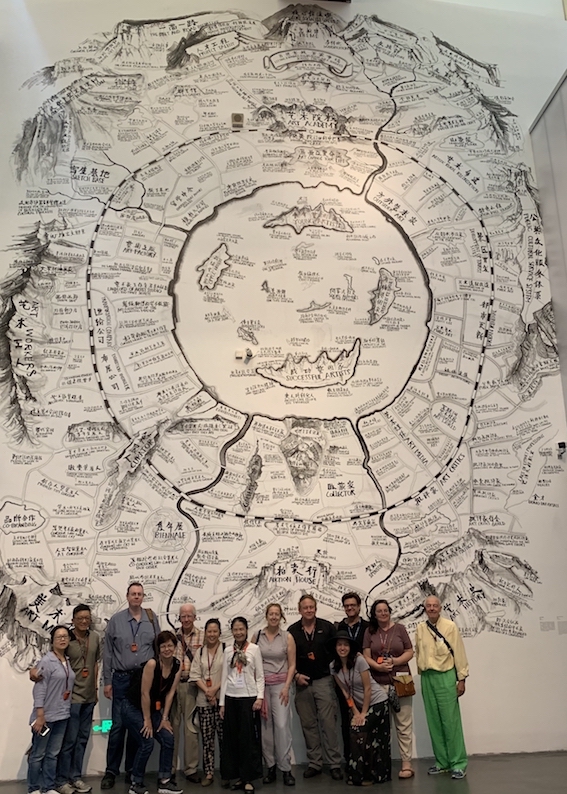
And we began with the huge UCCA commissioned work which focused specifically on progress and development of contemporary art in China. At the very top of this work is the young artist and educational institutions , the circular rail line (referencing Huantie district no doubt) encompasses the wider world of the art practitioner. And working further downwards….. for those fortunate few who have ‘made it’ the ultimately successful artist surrounded by other related industries. All interlaced with a healthy dose of humour balanced with ironic cynicism.
Moving on the to the next room ‘The Mapping of the World’ comprises 24 large scale maps, independent in theme but cohese in composition and concept, where the Map of Flora is connected to Map of Food and the Map of Animals is connected to Legendary beasts which in turn is connected to the Map of Gods. …..they are linked but with conceptual and metaphorical slippages between them.

China after 1989- Theater of the World’. This takes the history of contemporary Chinese art in a global perspective. Arranged in chronological order from left to right the upper part of the work marked out the eras of rule with sayings of the different leaders of China and sweeping downwards and across lay the undulations various political events and ideological currents, topographies of cultural movements from 1989 to 2008. Interestingly Qiu Zhijie views the year 2001 (the year Beijing won the bid for the Olympics) the most significant for Chinese contemporary art, as this opened the door to an international stage of global art with so many things following within a year or so . For example in 2002 the cultural ministry sent a group of artists to Sao Palo Bienalle and 2003 was the fist Chinese Pavillion at Venice Biennale.
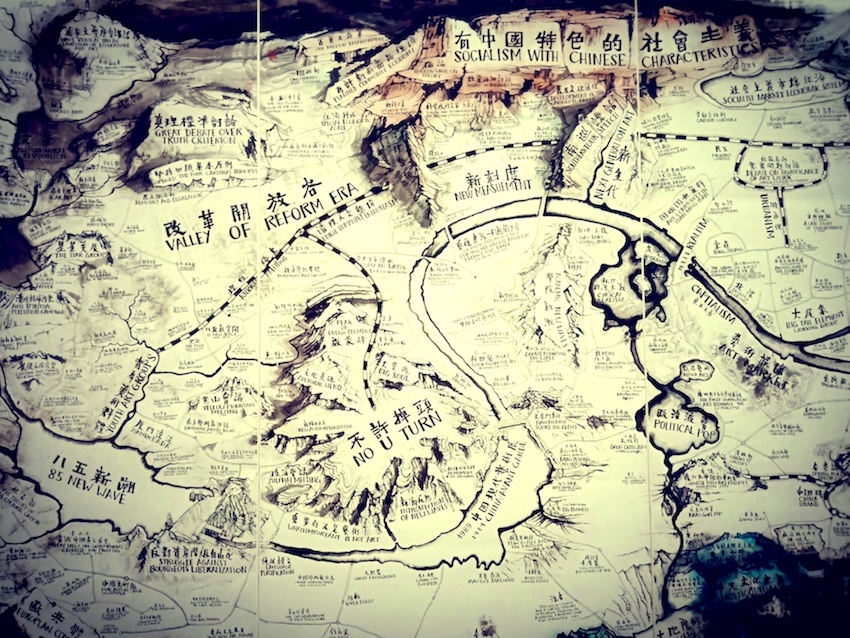
We then continued to the exhibition next door Civilization The way we live Now, an expansive photographic exhibition which has its gems tucked in various corners. The exhibition is however vast and a little overwhelming, lacking the space for the viewer to make new and imaginative connections as did the wonderland of Mappa Mundi.
*************************************
After lunch we embarked on China Landscapes Selections from the Taikang Collection. This interesting exhibition explores art collection as an institutional practice. The curation here takes a different approach. Re-examining the past while positioning it in the present itt focused on individual artworks while examining the artists practice. A big thank you to our guide Li Jia who explored with us the three historical periods , from 1942 to pre-economic reform , economic reform to the present .


Can you identify more?
We finished the day at the famed Red Gate Gallery where owner Brian Wallace has been operating for over 27 years running his gallery (previously at the Watchtower at Dongbianmen) and now in 798 for the past year .
(Last April 2018 I was part of a group exhibition at Redgate ‘Mortgaged Time’ http://niamhcunningham.com/mortgaged-time-the-artworks/ )


Along with meeting Brian we had the pleasure of chatting with artist Lin Chunyan who is currently showing his solo ‘Unity’ at the Red Gate. The work shows the most optimistic Beijing grey I have seen in a while. Lin’s floating figures hidden in different layers of foliage is the artist’s signature work creating a rythm of light throughout the tall wall spaces.
His opening reception is this Saturday
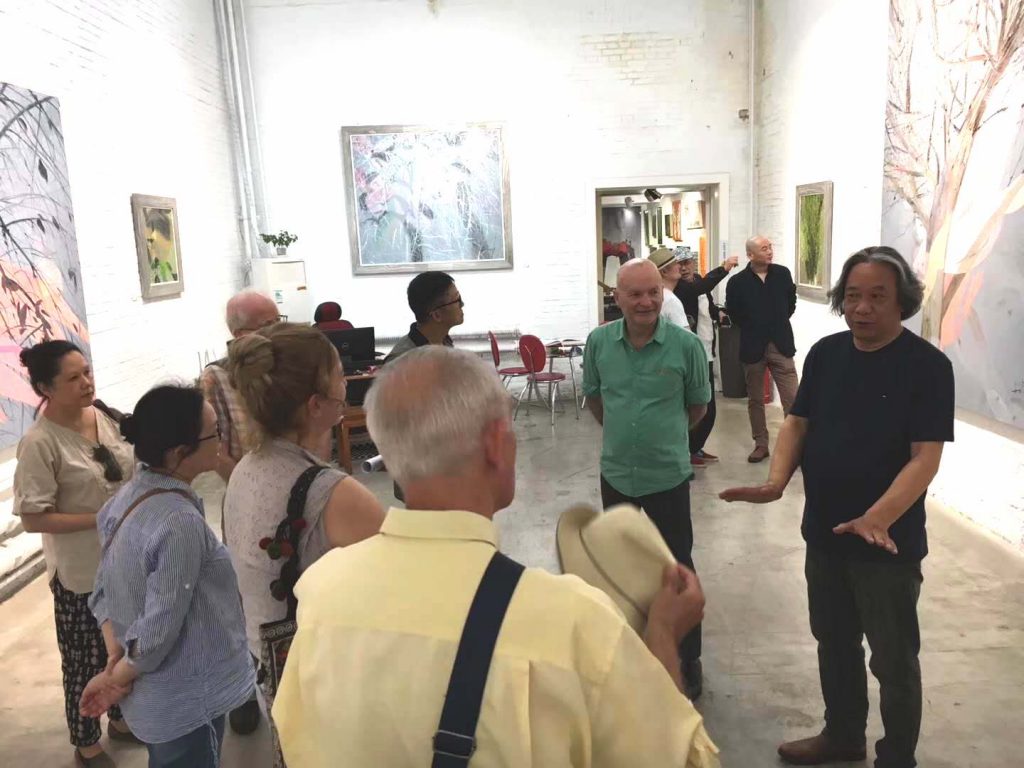
RASBJ offers talks, expert-led tours, dialogues and publications, which explore Chinese culture, society, and science.
Many thanks to Ben, Josephine, Julia, Alan, and Jim whose whose photos were ‘borrowed’ for the purposes of this blog.
